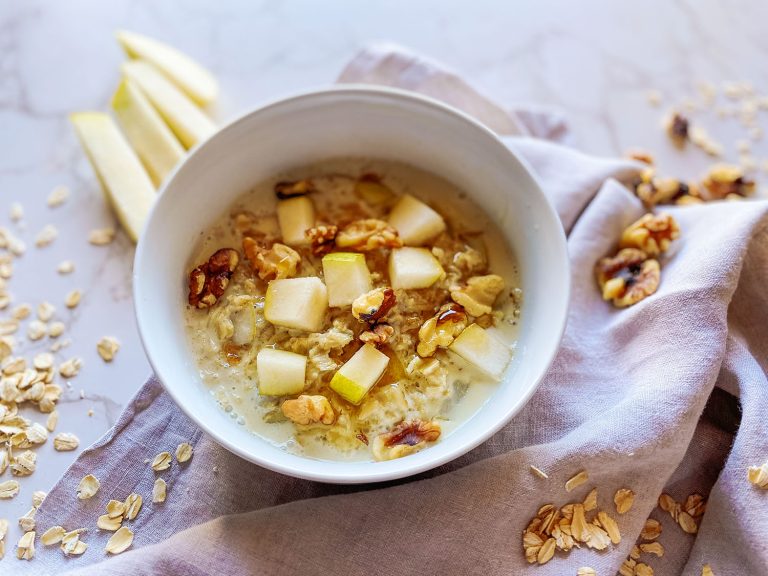Acid reflux occurs when stomach acid backflows in the wrong direction into the esophagus. This is a common occurrence but can cause other problems or uncomfortable symptoms, such as heartburn.
Acid reflux can occur when the lower esophageal sphincter (LES) is weakened or damaged. In normal conditions, the LES closes to prevent food in the stomach from moving into the esophagus.
The amount of acid your stomach produces is affected by the foods you eat. Making the right food choices is key to managing acid reflux or gastroesophageal reflux disease (GERD), a severe, chronic form of acid reflux.
Identifying Your Trigger Foods
Heartburn is an unpleasant and common symptom of acid reflux and GERD. You may develop a burning sensation in your chest or stomach after eating a large meal or certain foods. GERD may also cause vomiting or regurgitation as acid moves into your esophagus.
Other symptoms include:
- dry cough
- sore throat
- bloating
- burping or hiccups
- difficulty swallowing
- lump in the throat
Many people with acid reflux and GERD find there are certain foods that make their symptoms worse. There is no one diet that can prevent all symptoms of GERD, and foods that trigger symptoms are different for everyone.
To identify your triggers, it can be helpful to keep a food diary and track the following:
- the foods you eat
- the time of day you eat
- the symptoms you experience
It’s best to consistently keep a diary for at least a week. If your diet varies widely, it can be helpful to track your food and symptoms for longer. You can use the diary to identify specific foods and drinks that worsen your GERD symptoms.
The diet and nutrition recommendations in this article are just a jumping off point to plan your meals. Use this guide in conjunction with your food journal and your doctor’s advice. The goal is to manage and minimize your reflux symptoms.
Foods to avoid

Many experts debate whether certain foods can actually cause reflux symptoms, however, there are foods that have been shown to increase reflux symptoms for many people. To reduce your symptoms, you could try eliminating the following foods from your diet:
High-fat foods
Fried and fatty foods can cause the LES to relax which allows more stomach acid to back up into the esophagus. These foods also delay gastric emptying and digestion.
Eating high-fat foods increases your risk for reflux symptoms, so lowering your daily fat intake may help.
The following foods are high in fat. Eliminate them or eat them rarely and in small amounts:
- French fries and onion rings
- full-fat dairy products, such as butter, whole milk, regular cheese, and sour cream
- fatty or fried cuts of beef, pork, or lamb
- bacon fat, ham fat, and lard
- desserts or snacks, such as ice cream and potato chips
- cream sauces, gravies, and creamy salad dressings
- oily and greasy foods
Tomatoes and citrus fruit
Research shows that fruits and vegetables are an important part of a healthy diet. However, certain fruits can trigger or worsen reflux symptoms, especially fruits with a high acid content. If you have frequent acid reflux, you may want to reduce or eliminate your intake of the following foods:
- oranges
- grapefruit
- lemons
- limes
- pineapple
- tomatoes
- tomato sauce or foods that use it, such as pizza and chili
- salsa
Chocolate
Chocolate contains an ingredient called methylxanthine. This ingredient has been shown to relax the smooth muscle in the LES and increase reflux.
Garlic, onions, and spicy foods
Spicy and umami foods, like onions and garlic, can trigger reflux symptoms in many people.
However, these foods won’t cause reflux in everyone. If you frequently eat a lot of onions or garlic, track your meals carefully in your diary. Some of these foods, as well as spicy foods, may bother you more than other foods do.
Mint
Mint and products with mint flavoring, such as gum and breath mints, may also trigger acid reflux symptoms.
Other options
The foods above include the most common triggers, but you may have unique intolerances to other foods. You may want to consider eliminating the following foods over time to see if your reflux symptoms improve: dairy, whey protein, and flour-based products (e.g. bread and crackers).
Foods to Include
Frequent reflux symptoms may occur when stomach acid reaches the esophagus, causing irritation and pain. If your symptoms of acid reflux are frequent and unbearable, you can try eating these specific foods to help manage and reduce symptoms of acid reflux.
Keep in mind, none of these foods will cure your condition, so if you try these specific foods to manage your symptoms, your decision to do so should be based on your own experiences with them.

Vegetables
Vegetables are naturally low in fat and sugar. Some better options include green beans, broccoli, asparagus, cauliflower, leafy greens, potatoes, and cucumbers.
Ginger
Because of its natural anti-inflammatory properties, ginger is a natural treatment for heartburn and other gastrointestinal problems. Try adding grated or sliced ginger root to recipes or smoothies, or drink ginger tea to ease symptoms.
Oatmeal
This common breakfast favorite is a whole grain and packed with fiber. A diet high in fiber has been linked with a lower risk of acid reflux. Other high-fiber foods to include are whole-grain breads and whole-grain rice.
Non-citrus fruits
Melons, bananas, apples, and pears, are less likely to trigger reflux symptoms than acidic fruits.
Eat more of these fruits and limit or eliminate citrus fruits.
Lean meats and seafood
Lean meats (chicken, turkey, fish, and seafood) are low in fat and can lessen symptoms of acid reflux. Try these proteins grilled, broiled, baked, or poached.
Egg whites
Egg whites are another good protein option for those trying to manage reflux symptoms. You may want to limit egg yolks which are high in fat and may cause acid reflux symptoms.
Healthy fats
As mentioned above, high fat foods can worsen reflux symptoms, as fat weakens the LES and slows gastric emptying. Opt for healthy fats instead and reduce your intake of saturated fats and trans fats. Sources of healthy fats include avocados, walnuts, flaxseed, olive oil, sesame oil, and sunflower oil.
Key Points
There is no diet that has been proven to prevent or cure GERD. However, there is some evidence that shows certain foods can worsen symptoms in some people, while others may decrease or alleviate symptoms.
Research suggests that a high-fiber diet, specifically from fruits and vegetables, may help manage acid reflux and GERD. However, researchers don’t fully understand how fiber prevents GERD symptoms.
In any case, increasing your intake of dietary fiber is a good idea in general. In addition to managing GERD symptoms, fiber also reduces the risk of:
- high cholesterol
- uncontrolled blood sugar
- hemorrhoids and other bowel problems
Seeks advice from your doctor or registered dietitian if you have questions about whether to include certain foods in your diet. Foods that improve acid reflux symptoms for one person may increase symptoms for another.
Working with your doctor or a registered dietitian can help you develop a diet to control or lessen your symptoms.
The majority of people with GERD can often manage their symptoms with lifestyle changes and over-the-counter (OTC) medications. Talk to your doctor if lifestyle changes and OTC medications don’t improve symptoms. Your doctor may recommend prescription medications, or in more extreme cases, surgery.




